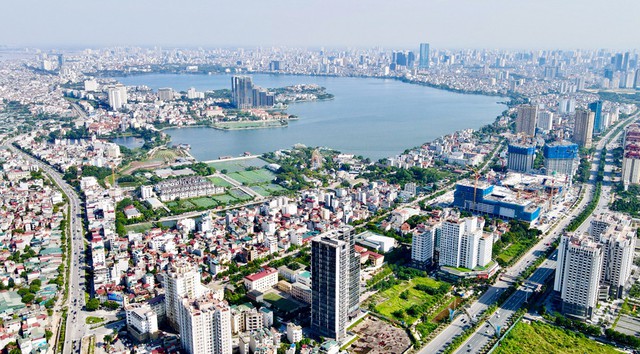Ha Noi targets to raise GDP per capita to US$13,500-14,000 by 2030
VGP - Prime Minister Pham Minh Chinh has signed a Decision approving a master plan on Ha Noi capital city for 2021-2030 period, with a vision towards 2050.

Accordingly, during 2021-2030, the capital city targets to sustain an average annual GRDP growth of 8.5-9.5 percent, contributing to 15-16 percent of the nation's GDP and 45-46 percent of the Red River Delta region.
The average GRDP per capita is projected to reach US$13,500-14,000.
The service sector is expected to account for 65.2 percent of the city's GDP while the industry-construction sector 25.3 percent; the agriculture, forestry, and fisheries sector 1.3 percent; and taxes on products excluding product subsidies 8.2 percent.
The capital's population is expected to rise to 10.5-11 million and the Human Development Index (HDI) value is 0.88-0.9 by the end of this decade.
The capital city targets to increase the urban green space area to about 10-12 square meters per person.
The proportion of urban domestic wastewater collected and treated will reach 70 percent, while all of industrial zones, export processing zones, and industrial clusters with centralized wastewater treatment systems meet environmental standards.
Besides, all of the urban and rural population with access to clean water through centralized water supply systems.
Regarding urban and rural areas, the urbanization rate will range from 65-70 percent while the public transportation rate is expected to meet 30-40 percent of the local residents' demands.
By 2050, Ha Noi strives for the average GRDP per capita of US$45,000-46,000; and the urbanization rate is around 80–85 percent.
Ha Noi posted GRDP growth of 6.27 per cent in 2023, according to the city's Statistics Office.
The capital city contributes 16 percent of the national GDP, 18.5 percent of the state budget, and 20 percent of domestic revenue./.
